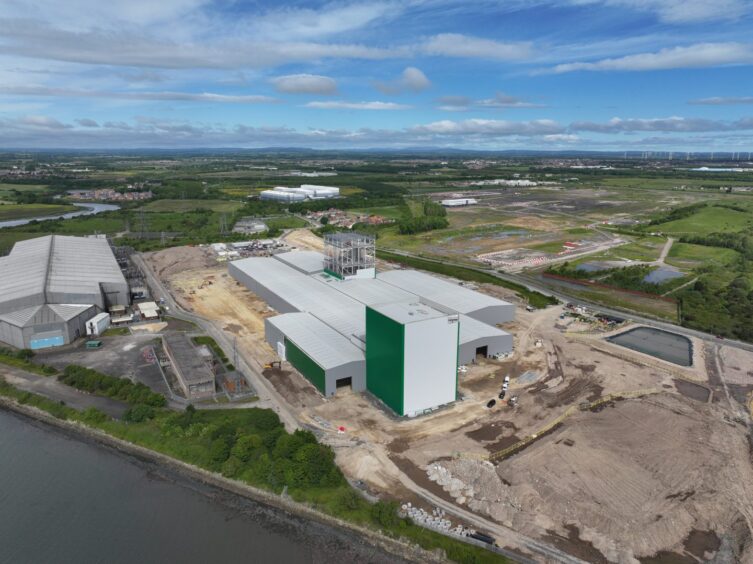
The UK’s Electricity Networks Commissioner’s report on how to accelerate the deployment of strategic electricity transmission infrastructure is clear. As it stands, the UK’s supply of high voltage (HV) cabling and high voltage direct current (HVDC) equipment looks likely to be in short supply for years or even decades to come, putting the country’s net zero ambitions at risk.
Countries around the world are seeking to build new infrastructure to meet the challenge of net zero.
In fact, according to BloombergNEF, the world needs to spend an estimated $21.4 trillion by 2050 on the electricity grid to attain net-zero carbon emissions and minimise the impact of climate change.
In the UK, several technologies are being pursued, but none more so than offshore wind.
With a sizeable offshore wind resource readily available, the UK is increasingly focusing on the deployment of larger turbines, with 20MW designs set to be commercialised in the next two to three years.
The availability of high voltage (HV) and extra high voltage (EHV) cables to bring the power to shore will be critical.
However, since the closure of several sites in the 1990s and early 2000s, domestic supertension and submarine (HV and EHV) cable manufacturing has been absent from the UK and the country has become wholly reliant on imports for these cables and for offshore wind export and interconnectors. This means that some of the UK’s most important forthcoming grid infrastructure, energy security and net zero projects are reliant on overseas supply chains.
Reshoring cable manufacturing in the UK
To fill this void, JDR Cables, with its rich history of manufacturing subsea cables, is building a new cable manufacturing facility in Blyth to meet the demand for HV and EHV submarine cables and reshore British submarine cable manufacturing.
Fittingly, the site chosen for the new facility is on the grounds of the now closed Blyth 1.7GW coal fired power station in Cambois, Northumberland.
Once featured in the Guinness Book of Records for the record number of hours it had run, the site is a success story of a bygone era which JDR Cables is now repurposing to support new energy generation records, this time in offshore wind.
When fully operational the site will manufacture hundreds of kilometres of high voltage submarine cables a year, which will support the connection of at least 2.5GW of new offshore wind plant construction per annum – an uplift on the power that was originally provided from coal at the Blyth A&B power stations – both in terms of sustainability and output.
While the facility’s initial remit is to support the roll-out of offshore wind, it will also lay the foundations to reshore the manufacture of HV and EHV export and land cables over the longer term.
Early plans for the facility are the manufacture of 275kV export cables as well as EHV AC and DC cables from 2030 and cables at 525kV in the future.
Altogether, the new facility will create vital strategic capability for the UK and its partners in Europe to achieve their collective and immediate renewable goals, and the flexibility to respond to different net zero transmission infrastructure scenario eventualities.
Heading up innovation
The UK and North Sea is fast becoming a global hub for floating offshore wind with the UK Government committing £31.6 million through the Floating Offshore Wind Demonstration Programme to support innovation in dynamic cables, anchoring and mooring, and floaters and foundations.
JDR Cables was selected to develop a 132kV dynamic cable and complimentary technologies. The work builds on our existing 66kV dynamic array cable which was deployed on the world’s largest floating offshore wind farm, Hywind Tampen in the Norwegian North Sea.
Interestingly, in another world first, the electricity generated from offshore wind assists in decarbonising Equinor’s offshore oil and gas production operations and highlights yet another emerging opportunity for sustainable energy transition that will be enabled by high voltage cables.
Building resilience and sustainability
Underpinning the work to reshore UK cable manufacturing is consideration for the global supply chain and efforts to improve sustainability. While achieving sustainability is a worthy aim, the forthcoming introduction of Sustainable Industry Rewards (SIRs) gives further incentive for developers to source responsibly, and for manufacturers to become more sustainable.
The SIRs will provide a financial top up to CfD projects that contribute to the economic, environmental and social sustainability of UK offshore wind farms. This will require greater transparency across the offshore wind supply chain and may see increased use of initiatives such as Science Based Targets, as companies seek to demonstrate clear and credible pathways to reduce emissions in all elements of the supply chain and make continuous improvements towards those goals.
There is also an increasing need to consider materials sourcing and use.
Many industry reports indicate an impending supply shortage of copper – an essential material for cable manufacturing – due of surging demand for electrification, political instability, and declining supplies.
While strong partnerships with raw materials suppliers go some way to providing security, independently verified industry initiatives such as the Copper Mark are also important for driving sustainability through improved recycling and reduced energy consumption. Alongside this, increased recycled content is also a desirable trend for all cable materials.
Meanwhile, earlier supply chain collaboration is allowing some projects to be specified with aluminium cable variants which not only safeguards against copper supply shortages but can offer cost savings too.
Lighter, but larger, aluminium cables are often considered more suitable for fixed foundation, long length static cables than copper cables.
The innovation, which was commercialised a decade ago, offers significantly reduced supply and installation costs, and enables greater offshore flexibility compared to drum deployment up to 66kV.
However, it is important to consider all factors and the full supply-chain when selecting the optimum conductor material. Increasingly the distance between material source and cable facility, modes of transport, and resources used, or emissions produced will be critical factors in the years to come.
As the world embarks on an expansive programme of infrastructure upgrades and extensions, HV and EHV cables have been projected to be in short supply.
While this could pose an imminent risk, forward thinking and responsible suppliers such as JDR are committing to the challenge and the UK is on the path to reshoring its HV and EHV submarine cable manufacturing heritage.
These UK facilities will be a critical asset for achieving net zero.
As the Electricity Networks Commissioner rightly put it, the forthcoming offshore wind and nuclear power capacity “will be a magnificent achievement” but one that is “wasted if we cannot get the power to homes and businesses”. HV and EHV cables are the vital connection to securing our low carbon energy future.
Recommended for you

 © Supplied by JDR
© Supplied by JDR